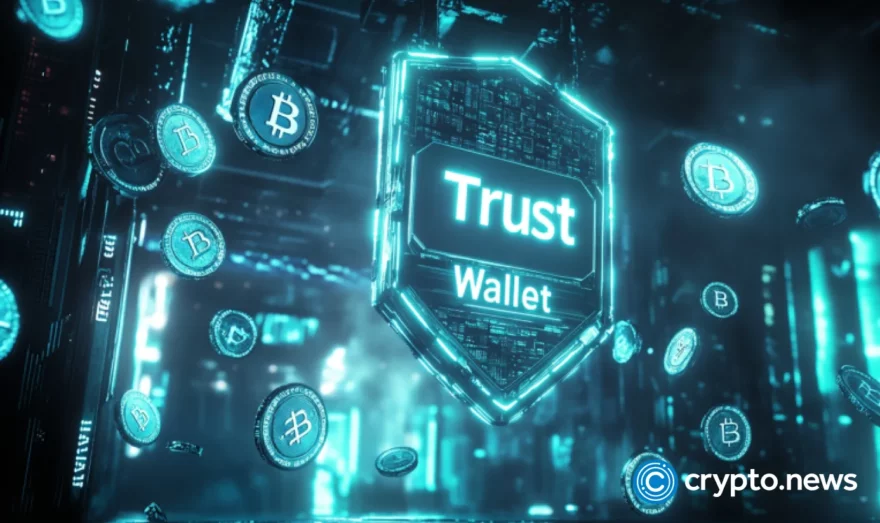Altcoin Explorer: QLC Chain, the Next Generation Public Chain for Network-as-a-Service (NAAS)

Blockchain technology has disrupted almost every sector, including telecom. QLC Chain is one of the leading blockchain projects that seek to transform the telecom sector for the better. Initially referred to as Qlink until a recent rebranding, QLC seeks to decentralize telecommunications by developing a distributed telecommunications platform in which users can purchase connectivity from other users rather than mobile providers.
In essence, QLC Chain seeks to develop a secure and trusted environment for communication services and streamline the digital divide by deploying distributed ledger technology (DLT), allowing anyone to operate and benefit from network services.
QLC Chain Project Overview
QLC Chain bills itself as the next-generation public blockchain designed for the Network-as-a-Service (NaaS).
The platform is based on the NEO protocol and integrates a multidimensional Block Lattice architecture that uses virtual machines (VM) to manage and support integrated smart contract functionality. QLC Chain leverages dual consensus: Delegated Proof of Stake (DPoS) and Shannon Consensus, an in-house consensus developed by the QLC Chain team.
Using two consensus protocols, QLC Chain delivers a high number of transactions per second (TPS), achieves massive scalability, and provides an inherently decentralized ecosystem for NaaS related decentralized applications (dApp). NaaS dApps can include various platforms such as Virtual Private Network (VPN), multicast protocols, custom routing, Wide Area Network (WAN), bandwidth on demand, intrusion detection and prevention, security firewall, and antivirus.
In simple terms, QLC Chain is a multidimensional block-lattice structured ledger with integrated telecom service capabilities. The platform decentralizes telecommunications services allowing you to purchase and sell telecom services from your peers instead of centralized telecommunication companies. The QLC Chain model is innovative, allowing users to sell unused data to others, sell access to their Wi-Fi connection and run their cell signal.
QLC Top Features
QLC packs outstanding features, which include:
Multidimensional Block Lattice Structure
QLC Chain leverages the Block Lattice Architecture to solve high transaction fees and slow transaction processing speeds. The Block Lattice structure only tracks one blockchain for each transaction account rather than tracking users’ transactions. This allows the network to take up less storage space allowing for increased transaction speed.
Block Lattice can support up to 7,000 TPS with over 50,000 users on the network. QLC has enhanced the Block Lattice by converting it into a multidimensional protocol that can support multiple tokens with smart contract functionality. The multidimensional block-lattice architecture allows for cross-chain communication as well as allows for massive scaling.
Dual Consensus Protocol
QLC Chain employs a dual consensus blockchain protocol: Delegated Proof-of-Stake (DPoS) for validating transactions and Shannon Consensus, which functions as a storage node. While DPoS serves as an efficient transaction protocol processing thousands of transactions via NEOs Byzantine fault-tolerance consensus, it’s flawed in handling the additional data storage nodes as well as bandwidth brought by smart contracts. Therefore, the QLC team developed the Shannon consensus to support the DPoS consensus by storing data efficiently and economically.
QLC History and Development Team
QLC Chain was initially known as Qlink before it was rebranded in May 2018. The Qlink Foundation was established in February 2018 by Allen Lee and Susan Zhou.
Both Zhou and Lee serve as co-CEOs in the Qlink Foundation. QLC Chain development is being done in three phases, and it’s currently in its third phase. Qlink Foundation launched its initial coin offering on December 22, 2017, raising over $19.2 million after selling 224 million QLC tokens.
The QLC development team comprises professionals with vast experience in software development, investment banking, and FinTech.
Allen Lee leads the team as the Chief Architect. Lee is a former Huawei software engineer and owns several patents, including YouYou Mobile. Susan Zhou is the co-founder and COO. She has more than ten years of experience in the telecommunications and investment industry. Other team members include Roger Lim (co-founder and former CEO of webvisions), Toya Zhang (former senior PR director of OKCoin) as the CMO, and Tony Gu (CEO of Rhodium Capital) as the head of strategy.
Dual Token Structure
QLC Chain implements a dual token structure, i.e., QLC and Q-Gas.
QLC Token
QLC token is a NEP-5 standard token based on the NEO protocol. QLC is the protocol token on the QLC Chain and acts as a payment method for market transactions. Transactions using QLC are performed instantly on the blockchain. The platform also allows users to stake QLC and access various benefits, including issuing tokens for the communication services, receive Q-Gas and vote for ledger updates, and more.
Q-Gas
The Q-Gas token is the utility fuel for symmetry behavior of information processes such as sending/receiving, encrypting/decrypting, uploading/downloading, and encoding/decoding. QLC holders can benefit from Q-Gas requirements when the communication service provider deploys its service on Go-QLC, such as A2P SMS globally billing and clearance. Q-Gas are burnt from the network once consumed.
Apart from QLC and Q-Gas tokens, QLC Chain also supports fiat currencies for use by telecom providers and advertisers. However, fiat transactions are handled offline to support the growth of cryptos uses on the platform.
QLC Tokenomics
Name: QLC
Circulating Supply: 240.00M QLC
Market Cap (USD): $16.80M
Max Supply: N/A
How to buy & store QLC Token
Since QLC Chain pre-mined the entire supply of QLC tokens at its inception, users cannot obtain QLC tokens via mining. The only option of acquiring QLC is through trading on a crypto exchange. QLC token is listed on multiple crypto exchanges, including Binance, Gate.io, Kucoin, Bitbns, etc. You can exchange QLC with multiple cryptos, including Bitcoin, Ether, Tether, and others.
QLC Chain is built on Neo blockchain; therefore, QLC token can be stored on Neo compatible wallets such as NEO-GUI, NEO WALLET, SEA, NEO Tracker, Ledger Nano S, and Ledger Blue.
How to get Q-Gas
Q-Gas will be generated by staking QLC from June 8, via Go-QLC wallet. The staking portal will be available 24 hours before, which is June 7, GMT. You can get Q-Gas by following the below steps.
Step 1: Create a QLC Chain Wallet
Step 2: Withdraw your $QLC to a NEP-5 wallet.
Step 3: Invoke Stakings
Step 4: Check your Q-Gas Earnings
Step 5: Lookout our Q-Gas Awarding programs
Top Telecom Services Offered by QLC Chain
A worldwide, decentralized Wi-Fi sharing network where users can share their backup or unused Wi-Fi with others. You will receive a reward with QLC.
Distributed enterprise telecommunication services (such as SMS / voice/data services) on QLC.
A decentralized telecommunications infrastructure: Users can build their own telecommunications infrastructure as mobile base stations by deploying a device designed specifically by QLC to support delivery. LTE-U protocol and POW + POS consensus mining algorithm.
A decentralized payment system: To reload mobile data plans and sell excess data to anyone who wants to buy. Especially useful for distributing content on mobile networks.
Closing Words
QLC Chain is a distributed mobile network built on the Neo blockchain. The platform decentralizes telecommunications services such as Wi-Fi, SMS, calls, and business telecommunication services by deploying smart contracts in the blockchain. QLC chain divides its mobile network into two parts on the blockchain, i.e., infrastructure and services. The infrastructure segment is hosted on Neo blockchain, while the services segment, including content tracking data and payment data, are stored on QLC Chain. The project has the excellent potential of solving current challenges in the telecom industry by enhancing network coverage, eliminating monopoly, cutting telecommunications infrastructure costs, and enabling users to utilize unused network assets.













